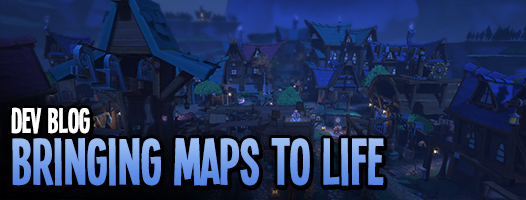
Jun 3, 2014
Dungeon Defenders - [TrendyEnt] iamisom
Greetings Defenders,
We’ve talked about the process of building playable areas, and we’ve shown you how we bring them to life with kismet. But what about the world beyond the playable area? How do we create those epic vistas in the distance in our DD2 maps?
Learn More...

We’ve talked about the process of building playable areas, and we’ve shown you how we bring them to life with kismet. But what about the world beyond the playable area? How do we create those epic vistas in the distance in our DD2 maps?
Learn More...







 </img>
</img>